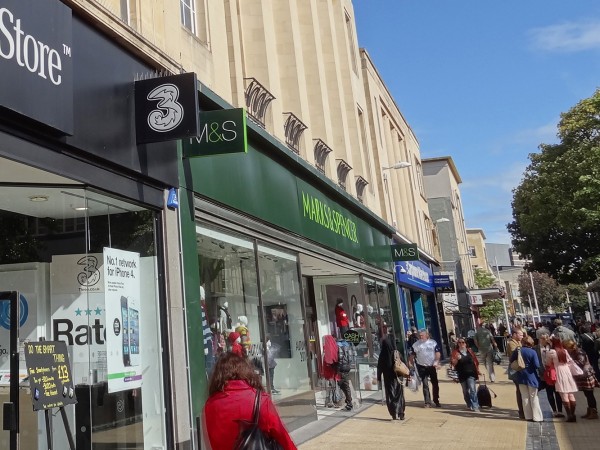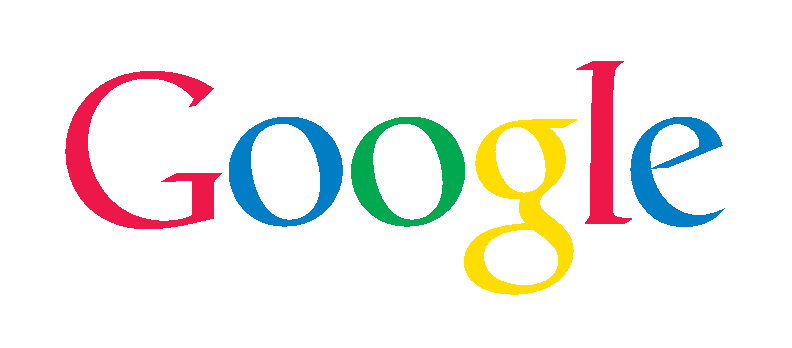 One of the key developments in economics in recent years has been the growing influence of behavioural economics. We considered some of the insights of behavioural economics in a blog in 2016 (A nudge in the right direction?). As the post stated, ‘Behavioural economists study how people’s buying, selling and other behaviour responds to various incentives and social situations. They don’t accept the simplistic notion that people are always rational maximisers.’ The post quoted from a Livemint article (see first linked article below):
One of the key developments in economics in recent years has been the growing influence of behavioural economics. We considered some of the insights of behavioural economics in a blog in 2016 (A nudge in the right direction?). As the post stated, ‘Behavioural economists study how people’s buying, selling and other behaviour responds to various incentives and social situations. They don’t accept the simplistic notion that people are always rational maximisers.’ The post quoted from a Livemint article (see first linked article below):
According to behavioural economists, the human brain neither has the time nor the ability to process all the information involved in decision making, as assumed by the rational model.
Instead, people use heuristics. A heuristic technique is any approach to problem-solving, such as deciding what to buy, which is practical and sufficient for the purpose, but not necessarily optimal. For example, people may resort to making the best guess, or to drawing on past experiences of similar choices that turned out to be good or bad. On other accasions, when people are likely to face similar choices in the future, they resort to trial and error. They try a product. If they like it, they buy it again; if not, they don’t.
On other occasions, they may use various rules of thumb: buying what their friends do, or buying products on offer or buying trusted brands. These rules of thumb can lead to estimates that are reasonably close to the utility people will actually get and can save on time and effort. However, they sometimes lead to systematic and predictable misjudgements about the likelihood of certain events occurring.
In traditional models of consumer choice, individuals aim to maximise their utility when choosing between goods, or bundles of goods. The context in which the choices are offered is not considered.
Yet, in real life, we see that context is important; people will often make different choices when they are presented, or framed, in different ways. For example, people will buy more of a good when it is flagged up as a special offer than they would if there is no mention of an offer, even though the price is the same.
 The recognition that framing is important to choices has led to the development of nudge theory. Indeed, it underpins many marketing techniques. These seek to persuade people to make a particular choice by framing it in an optimistic way or presenting it in a way that makes it easy to decide.
The recognition that framing is important to choices has led to the development of nudge theory. Indeed, it underpins many marketing techniques. These seek to persuade people to make a particular choice by framing it in an optimistic way or presenting it in a way that makes it easy to decide.
Governments too use nudge theory. In the UK, the Coalition government (2010–15) established the Behavioural Insights Team (BIT) (also unofficially known as the Nudge Unit) in the Cabinet Office in 2010. A major objective of this team is to use ideas from behavioural economics to design policies that enable people to make better choices for themselves.
The podcast linked below, looks at the use of nudge theory. The presenter, Mary Ann Sieghart looks at how we are being encouraged to change our behaviour. She also looks at the work of UCL’s Love Lab which researches the way we make decisions. As the programme notes state:
Mary Ann is grilled in UCL’s Love Lab to find out how she makes decisions; she finds taking the pound signs off the menu in a restaurant encourages her spend more and adding adjectives to the food really makes it taste better.
Walking through the Nudge Unit, she hears how powerful a tiny tweak on a form or text can get be, from getting people back to work to creating a more diverse police force. Popular with the political left and right, it has been embraced around the world; from Guatemala to Rwanda, Singapore to India it is used to reduce energy consumption, encourage organ donation, combat corruption and even stop civil wars.
But the podcast also looks at some of the darker sides of nudging. Just as we can be nudged into doing things in our interests, so too we can be nudged to do things that are not so. Politicians and businesses may seek to manipulate people to get them to behave in ways that suit the government or the business, rather than the electorate or the consumer. The dark arts of persuasion are also something that behavioural economists study.
The articles below explore some of the areas where nudge theory is used to devise policy to influence our behaviour – for good or bad.
Podcast
Video
Articles
- New frontiers of human behaviour
Livemint, Biju Dominic (15/9/16)
- It’s been 10 years since behavioral economics hit the mainstream
Quartz, Dan Kopf (13/10/18)
- What is ‘nudge theory’ and why should we care? Explaining Richard Thaler’s Nobel economics prize-winning concept
Independent, Ben Chu (9/10/17)
- Is Nudge Theory The Answer To Our Single-Use Plastics Problem?
HuffPost, Ollie Boesen (15/6/18)
- Re-enrolment key to ‘nudge’ UK into saving: survey
Investment and Pensions Europe Magazine (IPE), Elizabeth Pfeuti (22/10/18)
- Applying nudge strategies to higher education
Times Higher Education, Ben Castleman (6/7/18)
- Want to nudge others to install solar? Actions speak louder than words
Phys.org, Kevin Dennehy (25/10/18)
- DNA test and phone app to ‘nudge’ Waitrose shoppers towards healthier food
Imperial College London News, Caroline Brogan (12/10/18)
- “Nudge theory” explored to boost medication adherence
AMA Wire, Sara Berg (29/6/18)
- Simple ‘nudge’ letters can boost school attendance, new research suggests
The Seattle Times, Neal Morton (5/7/18)
- Using Behavioral Nudges to Treat Diabetes
Harvard Business Review, Thomas H. Davenport, James Guszcza and Greg Szwartz (10/10/18)
- Why nudge theory works until a kick in the backside is needed.
The Guardian, Andrew Rawnsley (22/10/17)
- Why Nudging Your Customers Can Backfire
Harvard Business Review, Utpal M. Dholakia (15/4/16)
Questions
- Explain what are meant by ‘bounded rationality’ and ‘heuristics’.
- How may populist politicians use nudge theory in their campaigning?
- Give some examples from your own behaviour of decisions made using rules of thumb.
- Should we abandon models based on the assumption of rational maximising behaviour (e.g. attempts to maximise consumer surplus or to maximise profit)?
- Find out some other examples of how people might be nudged to behave in ways that are in their own interest or that of society.
- How might we be nudged into using less plastic?
- How might people be nudged to eat more healthily or to give up smoking?
- To what extent can financial incentives, such as taxes, fines, grants or subsidies be regarded as nudging? Explain.
- Would you advise all GP surgeries and hospital outpatient departments to text reminders to people about appointments? What should such reminders say? Explain.
 When did you last think about buying a new car? If not recently, then you may be in for a surprise next time you shop around for car deals. First, you will realise that the range of hybrid cars (i.e. cars that combine conventional combustion and electric engines) has widened significantly. The days when you only had a choice of Toyota Prius and another two or three hybrids are long gone! A quick search on the web returned 10 different models (although five of them belong to the Toyota Prius family), including Chevrolet Malibu, VW Jetta and Ford Fusion. And these are only the cars that are currently available in the UK market.
When did you last think about buying a new car? If not recently, then you may be in for a surprise next time you shop around for car deals. First, you will realise that the range of hybrid cars (i.e. cars that combine conventional combustion and electric engines) has widened significantly. The days when you only had a choice of Toyota Prius and another two or three hybrids are long gone! A quick search on the web returned 10 different models (although five of them belong to the Toyota Prius family), including Chevrolet Malibu, VW Jetta and Ford Fusion. And these are only the cars that are currently available in the UK market.
But the biggest surprise of all may be the number of purely (plug-) electric cars that are available to UK buyers these days. The table below provides a summary of total registrations of light-duty plug-electric cars by model in the UK, between 2010 and June 2016.
Source: Wikipedia, “Plug-in electric vehicles in the United Kingdom”
In 2010 there were nly 138 electric vehicles in total registered in the UK. They were indeed an unusual sight at that time – and good luck to you if you had one and you happened to run out of power in the middle of a journey. In 2011 this (small) number increased sevenfold – an increase that was driven mostly by the successful introduction of Nissan Leaf (635 electric Nissans were registered in the UK that year). And since then the number of electric vehicles registered in the country has increased with spectacular speed, at an average rate of 252% per year.
There is clearly strong interest in electric vehicles – an interest likely to increase as their price becomes more competitive. However, they are still very expensive items to buy, especially when compared with their conventional fuel-engine counterparts. What makes electric cars expensive? One thing is the cost of purchasing and maintaining a battery that can deliver a reasonable range. But the cost of batteries is falling, as more and more companies realise the potential of this new market and join the R&D race. As mentioned in a special report that was published recently in the FT:
The cost of lithium-ion batteries has fallen by 75 per cent over the past eight years, measured per kilowatt hour of output. Every time battery production doubles, costs fall by another 5 per cent to 8 per cent, according to analysts at Wood Mackenzie.
There is no doubt that more research will result in more efficient batteries, and will increase the interest in electric cars not only by consumers but also by producers, who already see the opportunity of this new global market.  Does this mean that prices will necessarily fall further? You might think so, but then you have to take into consideration the availability and cost of mining further raw materials to make these batteries (such as cobalt, which is one of the materials used in the making of lithium-ion batteries and nearly half of which is currently sourced from the Democratic Republic of Congo). This may lead to bottlenecks in the production of new battery units. In which case, the price of batteries (and, by extension, the price of electric cars) may not fall much further until some new innovation happens that changes either the material or its efficiency.
Does this mean that prices will necessarily fall further? You might think so, but then you have to take into consideration the availability and cost of mining further raw materials to make these batteries (such as cobalt, which is one of the materials used in the making of lithium-ion batteries and nearly half of which is currently sourced from the Democratic Republic of Congo). This may lead to bottlenecks in the production of new battery units. In which case, the price of batteries (and, by extension, the price of electric cars) may not fall much further until some new innovation happens that changes either the material or its efficiency.
The good news is that a lot of researchers are currently looking into these questions, and innovation will do what it always does: give solutions to problems that previously appeared insurmountable. They had better be fast because, according to estimates by Wood Mackenzie, the number of electric vehicles globally is expected to rise by over 50 times – from 2 million (in 2017) to over 125 million by 2035.
How many economists does it take to charge an electric car? I guess we are going to find out!
Articles
Information
Questions
- Using a demand and supply diagram, explain the relationship between the price of a battery and the market (equilibrium) price of a plug-in electric vehicle.
- List all non-price factors that influence demand for plug-in electric vehicles. Briefly explain each.
- Should the government subsidise the development and production of electric car batteries? Explain the advantages and disadvantages of such intervention and take a position.
 Each year for the past 60 years, the ONS has published ‘Family Spending’, which ‘gives an insight into the spending habits of UK households, broken down by household characteristics and types of spending’. The latest issue, covering the financial year ending 2017, has just been released.
Each year for the past 60 years, the ONS has published ‘Family Spending’, which ‘gives an insight into the spending habits of UK households, broken down by household characteristics and types of spending’. The latest issue, covering the financial year ending 2017, has just been released.
To mark the 60th anniversary, the ONS has also published a blog, Celebrating 60 years of Family Spending, which compares spending patterns in 2017 with those in 1957. The blog looks at the percentage of the family budget spent on various categories, such as food, clothing, housing, tobacco and alcohol. Some of the percentages have changed dramatically over the years; others have hardly changed at all.
Before you read on, of the six categories mentioned above, which do you think have increased, which fallen and which stayed the same? What is your reasoning?
 Differences in patterns of consumption partly reflect incomes. In 1957, real household income was £381 in today’s prices; today it’s £544 (43% more). You would expect, therefore, that a greater proportion of household incomes today would be spent on more luxurious goods, with a higher income elasticity of demand.
Differences in patterns of consumption partly reflect incomes. In 1957, real household income was £381 in today’s prices; today it’s £544 (43% more). You would expect, therefore, that a greater proportion of household incomes today would be spent on more luxurious goods, with a higher income elasticity of demand.
Other changes in consumption patterns reflect changes in tastes and attitudes. Thus there has been a huge fall in the proportion of household income spent on tobacco – down from 6% in 1957 to 1% in 2017.
 Three of the biggest changes over the 60 years have been in housing costs, food and clothing. Housing costs (rent, mortgage interest, council tax, maintenance and home repairs) have doubled from around 9% to around 18% (although they were around 20% before the huge fall in interest rates following the financial crisis of 2007–8). Expenditure on food, by contrast, has fallen – from around 33% to around 16%. Expenditure on clothing has also fallen, from around 10% to around 5%.
Three of the biggest changes over the 60 years have been in housing costs, food and clothing. Housing costs (rent, mortgage interest, council tax, maintenance and home repairs) have doubled from around 9% to around 18% (although they were around 20% before the huge fall in interest rates following the financial crisis of 2007–8). Expenditure on food, by contrast, has fallen – from around 33% to around 16%. Expenditure on clothing has also fallen, from around 10% to around 5%.
Expenditure on alcohol, on the other hand, having risen somewhat in the 1970s and 80s, is roughly the same today as it was 60 years ago, at around 3% of household expenditure.
 Some of the explanations for these changing patterns can be found on the supply side – changing costs of production, new technologies and competition; others can be found on the demand side – changes in tastes and changes in incomes. Some goods and services which we use today, such as computers, mobile phones, many other electrical goods, high-tech gyms and social media were simply not available 60 years ago.
Some of the explanations for these changing patterns can be found on the supply side – changing costs of production, new technologies and competition; others can be found on the demand side – changes in tastes and changes in incomes. Some goods and services which we use today, such as computers, mobile phones, many other electrical goods, high-tech gyms and social media were simply not available 60 years ago.
Articles
Celebrating 60 years of Family Spending ONS blog, Joanna Bulman (18/1/18)
How did households budget in 1957? BBC News, Simon Gompertz (18/1/18)
Rising burden of housing costs shown by 60-year UK spending survey Financial Times, Gemma Tetlow (18/1/18)
Data
Family spending in the UK: financial year ending 2017 ONS Statistical Bulletin (18/1/18)
All data related to Family spending in the UK: financial year ending 2017 ONS datasets (18/1/18)
Questions
- Why has expenditure on housing increased so much as a proportion of household expenditure? What underlying factors help to explain this?
- Why has expenditure on food fallen as a proportion of household expenditure? Are the explanations on both the demand and supply sides?
- What has happened to the proportion of expenditure going on leisure goods and services? Explain.
- What factors affect the proportion of expenditure going on motoring?
- Of the broad categories of expenditure considered in this blog, which would you expect to increase, which to decrease and which to stay roughly the same over the coming 10 years? Why?
- If expenditure on a particualar good falls as a percentage of total expenditure as income rises, does this make it an inferior good? Explain.
 Guest post by Hazel Garcia from InvestmentZen
Guest post by Hazel Garcia from InvestmentZen
 An oft-repeated quote is that money can’t buy happiness. But according to multiple studies, yes, it can. The key is what you spend that hard earned cash on. When researchers asked individuals to reflect on their recent purchases, those who had made experiential purchases i.e. trips, lessons, events, etc. were much happier compared to those who had made material purchases.
An oft-repeated quote is that money can’t buy happiness. But according to multiple studies, yes, it can. The key is what you spend that hard earned cash on. When researchers asked individuals to reflect on their recent purchases, those who had made experiential purchases i.e. trips, lessons, events, etc. were much happier compared to those who had made material purchases.
Why is this the case? According to a 20 year study at Cornell, our excitement from new purchases fades quickly over time. That new watch you bought quickly becomes a part of your everyday life. This is what psychologists call the “hedonic treadmill,” which describes the way we return to our normal state of happiness after a momentous occasion. However, buying a new chair will return you much quicker to that state than an adventure across the Rocky Mountains.
Researchers identified several key reasons why this is the case. One reason is that an object is just an object and can never become a part of your identity (at least, not a healthy one),  whereas experiences shape us over time. In addition, because by definition unique experiences are only short-lived, we don’t adapt to them the way we might with a new phone or watch. They do not become part of the routine and as such are usually viewed in a special light.
whereas experiences shape us over time. In addition, because by definition unique experiences are only short-lived, we don’t adapt to them the way we might with a new phone or watch. They do not become part of the routine and as such are usually viewed in a special light.
Interestingly, researchers found that even a negative experience could be rated more highly than purchasing a luxury good. In the study, participants were asked to describe a bad experience they had recently and a few weeks later, they were asked again about it. Over the course of just a few weeks, most people’s opinion of that moment had changed.
This is because the human brain has a tendency to reduce the impact of stressful situations. In fact, a significant portion of those polled even stated that in the end, they were happy to have had the negative encounter as it gave them a fresh way to look at things. When similar questions were asked to those who had purchased a high-end item, their levels of happiness were consistently lower as time went on.
So when it comes to the age old question of “Does money buy happiness?” the answer is a resounding yes – provided you spend it on the right things. But of course, you should still aim to make every dollar go as far as possible in pursuit of great experiences. Take a look at the infographic below to see a visual summary of the research on money and how it can buy happiness.

Blog
References
Questions (by JS)
- Why does buying material goods not buy happiness? Does this apply to all material goods?
- What is different, in terms of happiness, about buying experiences? Does this apply to the consumption of all services?
- Is the consumption of experiences subject to diminishing marginal utility (a) for specific experiences; (b) for experiences in general? Explain.
- Why do we seem not to care as much about the “Jones'” vacation as about their income or possession of material goods?
 The term ‘Google it’ is now part of everyday language. If there is ever something you don’t know, the quickest, easiest, most cost-effective and often the best way to find the answer is to go to Google. While there are many other search engines that provide similar functions and similar results, Google was revolutionary as a search engine and as a business model.
The term ‘Google it’ is now part of everyday language. If there is ever something you don’t know, the quickest, easiest, most cost-effective and often the best way to find the answer is to go to Google. While there are many other search engines that provide similar functions and similar results, Google was revolutionary as a search engine and as a business model.
This article by Tim Harford, writing for BBC News, looks at the development of Google as a business and as a search engine. One of the reasons why Google is so effective for individuals and businesses is the speed with which information can be obtained. It is therefore used extensively to search key terms and this is one of the ways Google was able to raise advertising revenue. The business model developed to raise finance has therefore been a contributing factor to the decline in newspaper advertising revenue.
Google began the revolution in terms of search of engines and, while others do exist, Google is a classic example of a dominant firm and that raises certain problems. The article looks at many aspects of Google.
Just google it: The student project that changed the world BBC News, Tim Harford (27/03/17)
Questions
- Is Google a natural monopoly? What are the characteristics of a natural monopoly and how does this differ from a monopoly?
- Are there barriers to entry in the market in which Google operates?
- What are the key determinants of demand for Google from businesses and individuals?
- Why do companies want to advertise via Google? How might the reasons differ from advertising in newspapers?
- Why has there been a decline in advertising in newspapers? How do you think this has affected newspapers’ revenue and profits?
 One of the key developments in economics in recent years has been the growing influence of behavioural economics. We considered some of the insights of behavioural economics in a blog in 2016 (A nudge in the right direction?). As the post stated, ‘Behavioural economists study how people’s buying, selling and other behaviour responds to various incentives and social situations. They don’t accept the simplistic notion that people are always rational maximisers.’ The post quoted from a Livemint article (see first linked article below):
One of the key developments in economics in recent years has been the growing influence of behavioural economics. We considered some of the insights of behavioural economics in a blog in 2016 (A nudge in the right direction?). As the post stated, ‘Behavioural economists study how people’s buying, selling and other behaviour responds to various incentives and social situations. They don’t accept the simplistic notion that people are always rational maximisers.’ The post quoted from a Livemint article (see first linked article below): The recognition that framing is important to choices has led to the development of nudge theory. Indeed, it underpins many marketing techniques. These seek to persuade people to make a particular choice by framing it in an optimistic way or presenting it in a way that makes it easy to decide.
The recognition that framing is important to choices has led to the development of nudge theory. Indeed, it underpins many marketing techniques. These seek to persuade people to make a particular choice by framing it in an optimistic way or presenting it in a way that makes it easy to decide. 2017 Nudge Nudge
2017 Nudge Nudge 2017 Nobel Prize Lecture
2017 Nobel Prize Lecture When did you last think about buying a new car? If not recently, then you may be in for a surprise next time you shop around for car deals. First, you will realise that the range of hybrid cars (i.e. cars that combine conventional combustion and electric engines) has widened significantly. The days when you only had a choice of Toyota Prius and another two or three hybrids are long gone! A quick search on the web returned 10 different models (although five of them belong to the Toyota Prius family), including Chevrolet Malibu, VW Jetta and Ford Fusion. And these are only the cars that are currently available in the UK market.
When did you last think about buying a new car? If not recently, then you may be in for a surprise next time you shop around for car deals. First, you will realise that the range of hybrid cars (i.e. cars that combine conventional combustion and electric engines) has widened significantly. The days when you only had a choice of Toyota Prius and another two or three hybrids are long gone! A quick search on the web returned 10 different models (although five of them belong to the Toyota Prius family), including Chevrolet Malibu, VW Jetta and Ford Fusion. And these are only the cars that are currently available in the UK market.  Does this mean that prices will necessarily fall further? You might think so, but then you have to take into consideration the availability and cost of mining further raw materials to make these batteries (such as cobalt, which is one of the materials used in the making of lithium-ion batteries and nearly half of which is currently sourced from the Democratic Republic of Congo). This may lead to bottlenecks in the production of new battery units. In which case, the price of batteries (and, by extension, the price of electric cars) may not fall much further until some new innovation happens that changes either the material or its efficiency.
Does this mean that prices will necessarily fall further? You might think so, but then you have to take into consideration the availability and cost of mining further raw materials to make these batteries (such as cobalt, which is one of the materials used in the making of lithium-ion batteries and nearly half of which is currently sourced from the Democratic Republic of Congo). This may lead to bottlenecks in the production of new battery units. In which case, the price of batteries (and, by extension, the price of electric cars) may not fall much further until some new innovation happens that changes either the material or its efficiency. 







